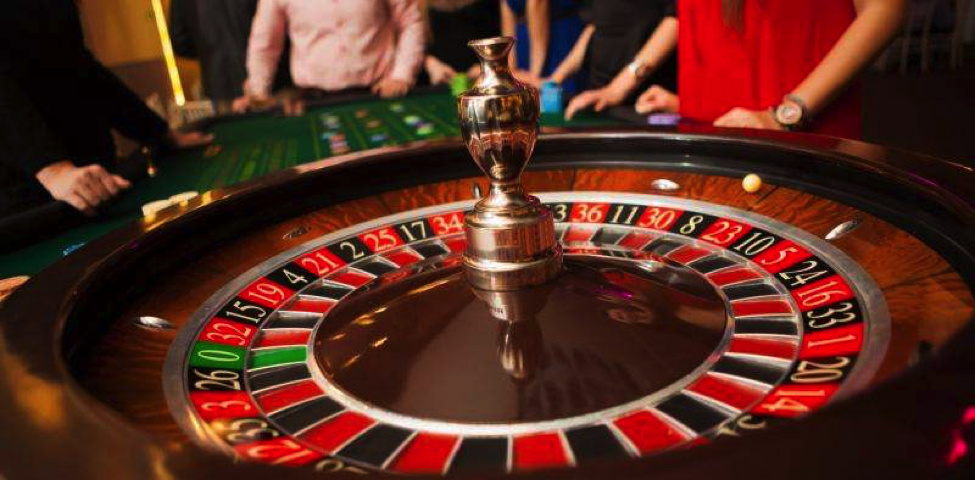When it comes to roulette, there are two main variations up for grabs – European Roulette and American Roulette. But what are the differences between the two? Or more importantly, is one version better than the other?
The folks over at roulettepro.com have shared a few insights, detailing the differences and similarities between European and American roulette.
Double-Zero
The first (and arguably the most important) difference between the two versions of roulette can be noted with a quick glance at the wheel. As you probably know by now, the European Roulette features one green zero at the head of the wheel. The American roulette wheel also has the single green zero at the head, but directly opposite it is a green double zero. This means that a European wheel has a total of thirty-seven pockets on it, whereas an American Wheel has thirty-eight.
This might not seem like a big deal, but it makes a world of difference when it comes to how the game plays…and the odds of you winning a prize…and the amount of money you can make.
When it comes to a European Wheel, the house edge (i.e. the amount that the house will win) is 2.7%. This is pretty low, but it means that they do have an advantage – as they always do. In the event that the ball lands in pocket zero, this means that no bets are won at all. Red/Black, Odd/Even, Low/High – all of these bets are losers when the ball lands in pocket zero, and this is where the house gets its edge. A single number bet pays you back odds of 35/1, but the chances of you getting it right are 1 in 37. Relatively tiny odds that are definitely not stacked in your favour.
When it comes to an American Wheel, the house edge is far higher. In this case, it is increased to 5.26% – all thanks to the addition of the double zero on the wheel. If the ball lands in either of the zero pockets, then the house will win all the bets. This means your odds of winning are slightly lower. You still get the same 35/1 payout for picking a single correct number, but the chances of you getting that number correct are now only 1 in 38. Significantly lower, hence it’s worth making sure that you understand how this works.
Betting/Wagering
This also has an impact on the other types of bets that you can place. You might think that Red/Black is a straightforward 50/50 chance of winning. However, this doesn’t take into account the zero, or zeros on the table. For a European Wheel, the odds of the ball landing in a red or black pocket are actually 48.65%. This drops further with an American Table, where the odds fall to 47.37%. This is significantly less than 50/50, but means that getting a two to one payout for a correct prediction is actually a pretty good prize.
You’d be forgiven for thinking that all of the above makes American roulette not worth bothering with. After all, why waste your money on a version of roulette with a much bigger chance of losing your money? The answer – there are certain bets that you can only place on an American Table. For example, you can bet on the top line of five numbers on an American Table, which you cannot do on a European table. If you win, you will win a prize with odds of 6/1 for this type of bet. One thing to bear in mind when playing this bet – it does vary the house edge slightly, increasing it to 7.89% for this bet only.
The House Edge
What does the house edge actually mean in practice? Let’s take a look at a European Wheel and break it down.
The house edge is 2.7%. This means that if you placed a total of £100 in bets over the course of 37 spins of the roulette wheel, then you would expect to lose (on average) a total of £2.70. This doesn’t seem like a lot, but it can add up over time. However, this also holds true across a number of players – somewhere else could be losing, you could be winning, and the house edge is maintained.
There is another way of looking at it, which explains the differences between the two wheels a little better.
- If you were to bet £1 on a European Wheel with thirty-seven pockets, then after 37 spins you would have lost about 1 unit on average.
- If you do the same £1 on an American Wheel with thirty-eight pockets, then after 37 spins you would have lost about two units on average.
Looking at it this way, you see that you would lose twice the amount of money on an American Wheel over a specified period of time than you would on a European Wheel. So if you were to lose £500 in an hour on a European Wheel, then over the same period of time you might have lost £1000 on an American Wheel. Or, it would have taken just 30 minutes to lose the same £500.
A Case of Personal Preference
For the most part, experienced gamblers recommend sticking with European roulette where available. Doing so means reducing the house edge and improving your chances of pocketing a prize. Nevertheless, there are others who get a kick out of the unique betting opportunities that are exclusive to American roulette.
All in all, therefore, you can’t realistically say that one version is ‘better’ than the other. As with all casino games, it’s a case of personal preference determining which way to go. Not to mention, your preferred playing style, the size of your bankroll and your risk appetite.
Feel free to give both European roulette and American roulette a go, in order to see which of the two you have better luck with. If you’re a beginner or casual gamer, however, European roulette is probably the way to go.
You might also find the following articles interesting:
- 12 Eye-Opening Facts You Never Knew About Las Vegas
- A Beginner’s Guide to Roulette – Getting Started
- 5 New Bingo Trends to Look Out For















